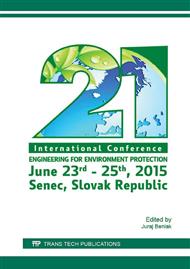p.31
p.39
p.49
p.55
p.63
p.69
p.79
p.89
p.95
The Energy Potential of Municipal Waste in the Žilina Region
Abstract:
Waste production is greater every year with society evolution. The same problem is also in Slovak republic, but Slovakia is significantly behind other developed countries in municipal waste management especially in area of energy utilization and recovery of the municipal waste. This problem will be totally reflected after the ban of the waste dumping in landfills. This work solves the problem of waste management in the Žilina region of Slovakia. Žilina region produces approximately 185000 tons of municipal waste. At present there is the majority of the waste dumped in the landfills. Large part of this waste could be energy utilized. Except municipal waste can be also used other types of the waste for the energy utilization. The paper evaluates energy potential of municipal waste in Žilina region. During the work it was determined the ratio composition of the waste in the Žilina region. There were measured gross calorific value, low calorific value and humidity on the waste samples. Based on these results it was determined energy potential of the municipal waste in the Žilina region. This energy potential could provide part of the heat and electricity for the Žilina region after using appropriate methods of thermal disposal.
Info:
Periodical:
Pages:
63-68
Citation:
Online since:
April 2016
Authors:
Price:
Сopyright:
© 2016 Trans Tech Publications Ltd. All Rights Reserved
Share:
Citation:


